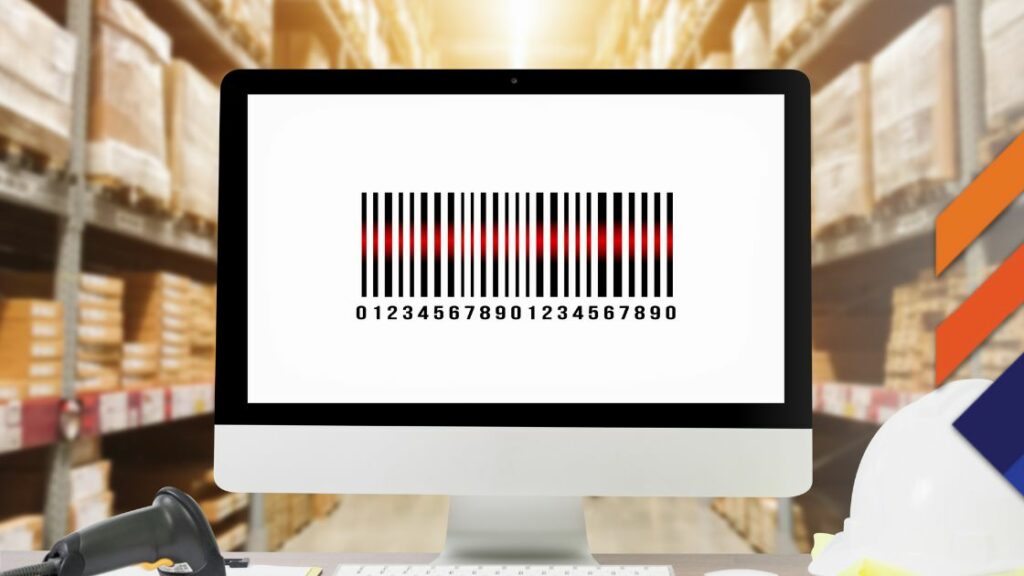How Barcode Scanning can Help You Streamline Warehouse Operations
Contents
Running a warehouse is hard work, and it’s much harder when you don’t have real-time visibility into your stock levels.
Barcode scanning is an essential part of a high-functioning warehouse: helping us store, access, and track key stock information. Read on for the rundown on barcode scanning: what it is, how it works, and how it can be used to streamline your warehouse operations.
What is Barcode Scanning?

Every warehouse needs a way of recording and tracking what stock is entering and leaving the warehouse. Barcodes are an organisation tool that helps to easily track and categorise the different items in your warehouse, making it easier to keep tabs on your inventory.
However, in order to process and keep track of the inventory you’ve assigned barcodes to, you need a way to easily access, store and sort through that information — and that’s where barcode scanning comes in.
A barcode scanning system incorporates both hardware (in the form of physical scanners) and software that enables you to sort and store information from each barcode. Using a barcode scanning system, warehouse managers are able to scan barcodes and immediately access key information about the item scanned, as well as automatically update the database when an item is picked, packed, and shipped. In this way, a barcode scanning system allows a warehouse to become more organised and efficient.
How Does Barcode Scanning Work?

A barcode scanning system can be put to work at several points throughout your warehouse. In order to implement a barcode scanning system, you will need a barcode printer that is able to print the barcode labels you can use on items, articles, bins, and different locations throughout your warehouse. Many systems such as Datapel include barcode printers as part of the purchase.
Usually, a barcode scanner is best used in conjunction with a Warehouse Management System (WMS), which allows you to use your barcode scanning capabilities throughout several different warehouse operations.
To control inventory and track stock levels, you can use the barcode scanner to scan the code found on a product. Your WMS will then read the code and record vital information such as product type and location. As your product moves around the warehouse and is eventually shipped, this information will stay stored within the barcode.
Why is Barcode Scanning Important?

Barcodes are amazing ways to store a wealth of information in an easily accessible way: simply scan to learn key information about the product. Barcodes can also be used to mark locations or bins throughout your warehouse. Through this, you can better understand where stock is at any time.
What are the Benefits of Barcode Scanning For Businesses?

Increased Visibility
Barcode scanning improves visibility throughout your warehouse by integrating product information (contained in the barcode) with your existing warehouse management software, which helps you track things like upcoming orders, stock, and more. This increased visibility allows you to better understand the inventory levels within your warehouse at a glance.
Saving Time
Barcodes give you access to a wealth of information at your fingertips: which means that you don’t need to keep running back and forth to the computer, cross-referencing records, or keeping time-consuming manual logs of items picked, packed, shipped, or expired. When used with a warehouse management system, this information becomes automatically centralised and accessible to key team members— helping you save time across the board.
Less Admin Work
Compared to manual processes, using barcode scanning can save a ton of administrative labour in your warehouse. This is because a barcode scanner decreases the need for manual data entry, manual stocktake, and the need to run to the keyboard every five minutes to input new information (no quick task in a large warehouse!).
Find the System that Works For You

Looking for a barcode scanning solution that will help you achieve best practices in your warehouse operations? Experience full visibility and an integrated solution with the Datapel warehouse management system.
“Honestly, if you don’t have barcode scanning, you’re losing money. Plain and simple.”
– Andrew Arthy, EHI Australia
Easily print and scan barcodes and implement pick, pack and ship workflows throughout your warehouse without returning to the keyboard.
Book a demo today.

Adam Wesley is the Founder and Managing Director of Datapel Systems, where he serves as an agile Operational Leader with a fervent dedication to problem-solving, strategic thinking, and process improvement. With a remarkable career spanning over two decades in the IT landscape, Wesley brings a wealth of knowledge and expertise.
For the past 15 years, he has honed his skills in the niche field of warehouse workflow solutions. Wesley firmly believes that effective business systems should not only meet the needs of warehouse operations but should also empower and support warehouse workers. His vision revolves around achieving the precise shipment of orders while simultaneously minimising order fulfilment time.
Adam Wesley’s commitment to innovation and efficiency in the ever-evolving IT industry has positioned him as a respected figure, and his leadership at Datapel Systems continues to drive the company towards excellence in warehouse management solutions.







